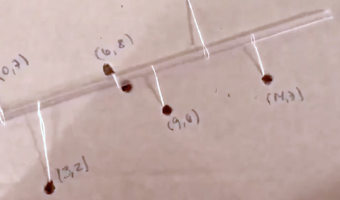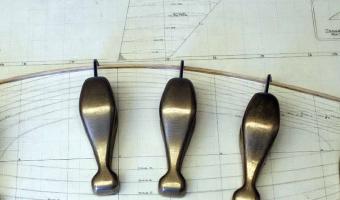
In November 2020, a public health expert named Jorge Pacheco Jara found he could explain regression with a cardboard, a straw, and strings. He posted a video of his idea on Twitter (video above), implying that his device performs a classic linear regression, but in reality it is closer to a Deming regression — for an illustration of the difference, see this image (but also, his device minimizes the total distance to the regression line and not the sum of the square distances). Presumably […]
In November 2020, a public health expert named Jorge Pacheco Jara found he could explain regression with a cardboard, a straw, and strings. He posted a video of his idea on Twitter (video above), implying that his device performs a classic linear regression, but in reality it is closer to a Deming regression — for an illustration of the difference, see this image (but also, his device minimizes the total distance to the regression line and not the sum of the square distances). Presumably because people pointed out inaccuracies in Jorge Pacheco Jara’s description and he did not want to leave a misleading post, he deleted his tweet.
However, people had already downloaded his video and started sharing it on social media platforms like LinkedIn, Facebook and Twitter. To this day, people are still posting the video without attribution, always inaccurately presenting the method as doing classical linear regression.
It would be surprising if Jorge Pacheco Jara was the first person to discover this ingenious way of demonstrating the general concept of regression, but we are not aware of any prior source for the moment.
Sources:
Jorge Pacheco Jara’s reply to his deleted Twitter post (Nov 2020): https://x.com/jorge_pacheco/status/1327768017791434752 (archived version) A screenshot of his original Twitter post can be seen here (Nov 2020): https://notawfulandboring.blogspot.com/2020/11/stats-arts-and-crafts.html (archived version). In English, the post says: “I had an attack of artemania and tried to replicate a regression line.” A live discussion on Reddit about what the device does exactly, and whether it’s a good explanation at all (Nov 2020): https://www.reddit.com/r/interestingasfuck/comments/k40puy/line_of_best_fit_visualised/ The image comparing classic linear regression with Deming regression is from Nick McClure’s TensorFlow Machine Learning Cookbook. Related: Also see our other entries on physical computation.









